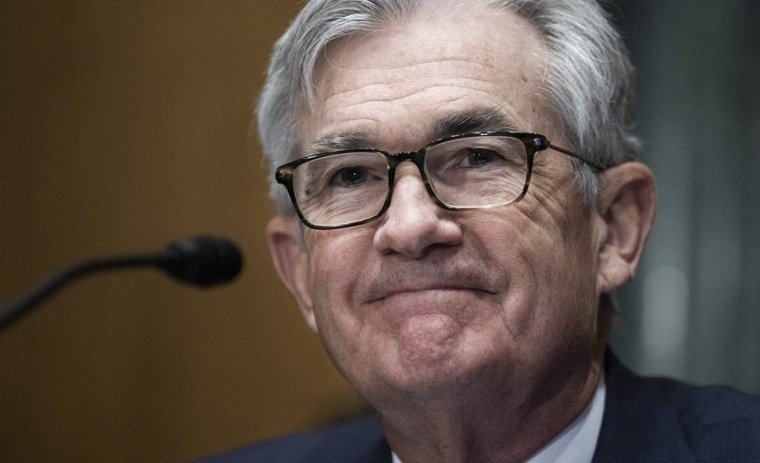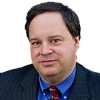
Monetary-policy watchers are currently divided into two groups. But perhaps both sides should pause and reflect on where we were 18 months ago and where we are now.
On one side of the divide are those of us who still obsess over the great imbalance between the supply of savings and the demand for funds for real investment. These were the conditions that underpinned a decade of zero-lower-bound (ZLB) interest rates and secular stagnation (low growth due to structurally low aggregate demand) after the 2008 global financial crisis. Since there is no fundamental reason for expecting the pandemic and the subsequent economic reopening to have eliminated this imbalance, it follows that the equilibrium neutral real interest rate (where monetary policy would be neither expansionary nor contractionary) remains very low: namely, where it was during the secular-stagnation period.
It also follows that major central banks’ current policies are substantially restrictive. For those of us in the first group, the salient risk is that maintaining nominal interest rates at their current level could trigger a big recession, which would definitely return us to full-on secular stagnation, with interest rates at or near the ZLB and economies severely depressed.
By contrast, the second group takes current asset prices and interest rates as “natural,” arguing that these measures correspond to the economy’s current equilibrium. Viewed in this light, current central-bank policies are not substantially restrictive, but rather close to neutral. Members of this group seem preoccupied with memories of Arthur Burns. After becoming chair of the Federal Reserve early in 1970, he lowered the federal funds rate from above 9% to 4.5% by the end of the year. That turned out to be one of the major economic policy mistakes that gave us the inflation of the 1970s.
This second group worries that the Fed will repeat Burns’s mistake by prematurely lowering interest rates before confidence in its commitment to the low-inflation anchor is fully restored. Thus, the very wise and accomplished economist Mohamed A. El-Erian warns that, “The more the Fed gives in to investor expectations for sizeable and early rate cuts in 2024 – including getting closer to the six cuts priced in for next year – the more the markets will press for an even more dovish policy stance.”
The big salient risk, then, is that:
“… the Fed, uncomfortable with the disconnection between its forward policy guidance and market pricing, is pressured into policy actions that please markets but prove inconsistent longer-term with the central bank’s mandate. That would not be new. It played out in January 2019 with a policy U-turn when [Fed Chair Jerome] Powell unveiled new language that opened up the possibility that the next move in rates would be down, six weeks after the central bank put markets on notice of further rises.”
My first reaction to this argument is to say, “But wait: The January 2019 pause worked out well!” Recall that by August of 2019, the Fed wanted a lower federal funds rate and therefore did begin trimming it. Had Powell not made his U-turn, and had market long-term rates and financial conditions been more restrictive over the first half of 2019, the Fed might well have faced a more difficult problem in the fall of 2019 than it did.
Stepping back, I have been generally puzzled by the tone of most commentary on the Fed since Joe Biden became president and the late-pandemic economic reopening began. The Fed was indeed late in starting to raise interest rates during the reopening, but it had very good reasons, and there have been few if any downsides of its delay.
When the Fed did start tightening, it went much faster and further than I had wanted. But it turns out that Fed policymakers were right, and I was wrong. In retrospect, it makes sense that if you move late, you need to move aggressively to catch up. While some financial porcelain was broken – three major but small-enough-to-fail banks are gone – we already know how to clean up those kinds of messes before others cut their feet on the shards.
Now that the Fed is trying to thread a very small needle, all commentators would do well to acknowledge that orchestrating an extremely rapid and successful post-pandemic reopening followed by a macroeconomic soft landing is no small feat. It is an exceedingly difficult task that the Fed has so far carried out almost perfectly. Powell and his colleagues should be congratulated. Their current judgments of a complex situation deserve our respect.
J. Bradford DeLong, a former deputy assistant US Treasury secretary, is Professor of Economics at the University of California, Berkeley, a research associate at the National Bureau of Economic Research, and the author of Slouching Towards Utopia: An Economic History of the Twentieth Century (Basic Books, 2022). Copyright: Project Syndicate, 2023, and published here with permission.
15 Comments
One day Jeff Snyder will be right, surely. In the meantime the decades keep slipping away from him.
That is quite a proactive comment David
Is it me or do I get the feeling you’re really bothered by Jeff David?
The number of "mainstream" experts in August 2008 screaming that "we're in RECESSION NOW and about to have a Global Financial Crisis imminently" begins with a the letter Z.
The resilience of the US economy is quite surprising.
Perhaps so but if President Biden still possesses much resilience, that would be even more surprising because the polling evidences dissatisfaction at large, with his presidency. And unless he is derailed, ex President Trump will arrive back in 2024 like hell on a new set of wheels.
It's NOT resilient, and it matters now whether Biden or Trump are in the Whitehouse (I didn't say 'in control').
The US 'economy' is still, at its core, extraction, consumption and excretion. From a collection of finite stocks. Surprising inertia, but not sustainable. Not even close. You have to be a flat-earth-believer-type - an economist or a sycophant thereof - to think it is even remotely close to being maintainable.
Worse. they have no mechanism for measuring depletion and degradation; those come as such surprises to these types, they deny the very existence of same.
extraction, consumption and excretion
That also describes a sheep in a paddock, eating and shitting, also growing. These little munchers clean up around solar panels ;)
The US red team will be in disarray without their famous leader, he is going down with a fight.
No, it doesn't.
Ask yourself where the energy comes from for that growing, and it's the sun. The upper limit is the square meterage times the efficiency of photosynthesis - which is about 25%.
Then you take the meat and wool off - there were nutrients in that, as well as energy. So either you run down the nutrients in the paddock soil, or you import said nutrients. Haber Bosch represents about half our food, as an external - and finitely-sourced - input.
There is an upper stocking-rate to that paddock; energy in and nutrients in vs nutrients and (food) energy out. So there are Limits to Growth.
Some people just refuse to see...
The Red Team are in disarray because their narrative (economic growth will lift you lower-income folk's boats to our exalted position given time) has been proven temporary, and thus invalid. The leadership of the 'other' team were the same elite, with a slightly different slant on it, but both are now invalid. What comes next is yet to be written.
Once again central bankers express puzzlement over what Bernanke called the "savings glut" or as expressed above "the great imbalance between the supply of savings and the demand for funds".
With recognition of the simple fact that “Banks fund new loans by creating new deposit money”, it is apparent that it is the lax lending standards of banks which create the glut. If there are inadequate savings as collateral to support the loan, the funds created by the creation of the loan will be greater than the initial required collateral, creating a potential for positive feedback (in the sense of nuclear fission, not performance appraisals).
The appropriate step to eliminate the "savings glut" is to raise interest rates, but instead the central banks lower them, raising assets prices, to create more equity collateral and so feeding the exploding Ponzi schemes of real estate and asset speculation.
Agreed. The lies of FIAT based banks.
The US Fed has had a miniscule impact on changes in the general price level in the US. The channels monetary policy is supposed to work through (lowers demand, increases unemployment etc) show next to zero change across sectors where prices have fallen etc
'the great imbalance between the supply of savings and the demand for funds for real investment'
I suppose he may be right. This imbalance may still be with us. The Build Back Better infrastructure investments in the US may soak up a bit of the excess world savings but if the rest of the excess is still with us then 5% for US treasury bonds is an artificial number.
If inflation is a result of Covid manufacturing blockages + stimulus cheques + the Russian invasion of Ukraine, then only the Russian war on Ukraine, problems with ships in the straits of Hormuz and interest payments are left to fuel inflation.
If inflation drops then there will be no need for the US to pay out billions in interest to bond buyers.
If the imbalance is still with us then the search for a real rate of return on excess capital will return once 5% interest rates are no longer available.
Central banks can tie this money up by increasing interest rates (or keeping them artificially high) but this is at a cost to industry and home buyers.
"After becoming chair of the Federal Reserve early in 1970, he lowered the federal funds rate from above 9% to 4.5% by the end of the year. That turned out to be one of the major economic policy mistakes that gave us the inflation of the 1970s."
The Arab oil embargo was the main culprit behind the high inflation of the 1970s, not a monetary policy decision.

We welcome your comments below. If you are not already registered, please register to comment
Remember we welcome robust, respectful and insightful debate. We don't welcome abusive or defamatory comments and will de-register those repeatedly making such comments. Our current comment policy is here.